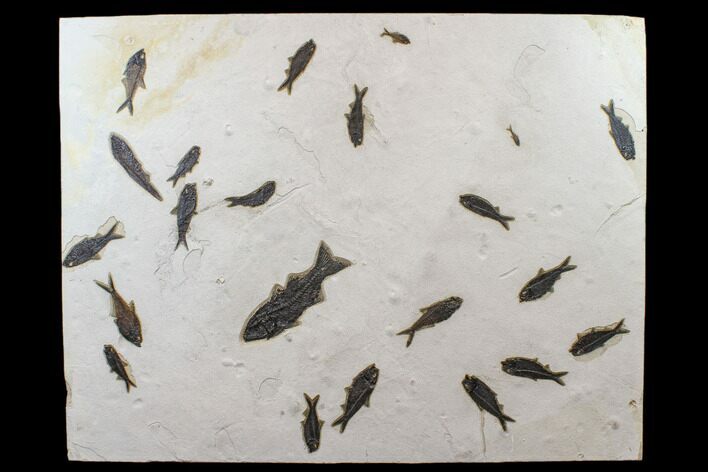This Specimen has been sold.
Spectacular, 47" Fossil Fish Mortality Plate - Wyoming
Due to the size and weight of this piece it will be shipped on a pallet or in a crate via freight. Our website cannot automatically calculate freight shipping costs, so these costs will be calculated and billed after purchase. Please contact us prior to purchase if you need a shipping quote.
This 47" fossil fish "Mural" with a 10.4" long Mioplosus and 21 other fish, would make a stunning centerpiece in any room. It's like having a window that looks under the water and into the past right from your home! Murals like that are commonly made by individually extracting the fish fossils and carefully inlaying them to a larger piece of shale to create a natural aesthetic. In this case, the Mioplosus and the large unidentified fish have been inlaid into this large slab of shale. The 15 Knightia fish and 5 Diplomystus were naturally associated with each other prior to the inlaying of the two largest fish. These fish came out of the 18 inch layer at the Lindgren Quarry near Kemmerer, Wyoming.
A combination of natural preservation and skilled craftsmanship brings the prehistoric waters to life in a piece sure to be a conversation starter! Backed with wood for stability and having a wall hanger already installed, it's ready to be hung on the wall or mantle right away.
SPECIES
Mioplosus labracoides, Diplomystus dentatus & Knightia eocaena
LOCATION
Lindgren Quarry, Kemmerer, WY
FORMATION
Green River Formation
SIZE
47 x 36", 150 lbs, Mioplosus 10.4" long
CATEGORY
SUB CATEGORY
ITEM
#179322
We guarantee the authenticity of all of our specimens.
 Reviews
Reviews






















